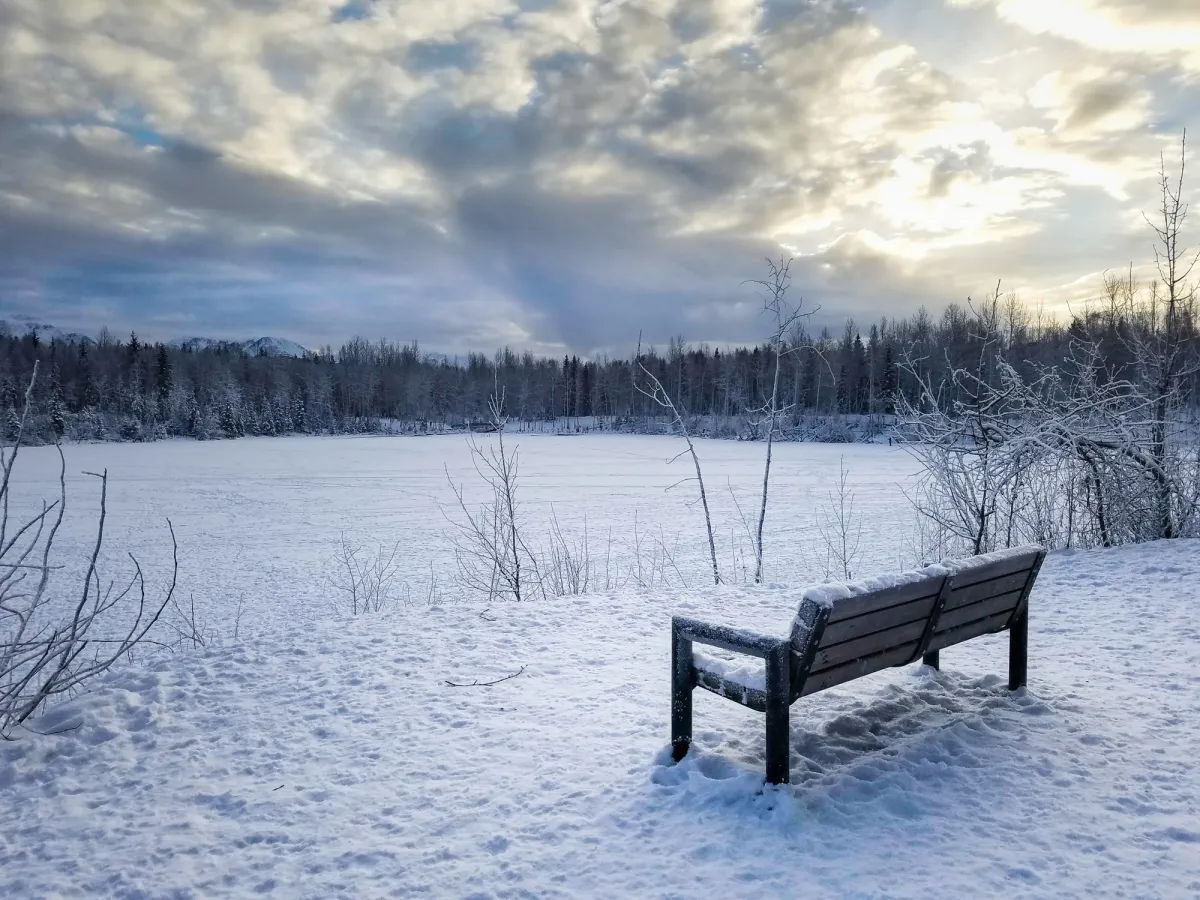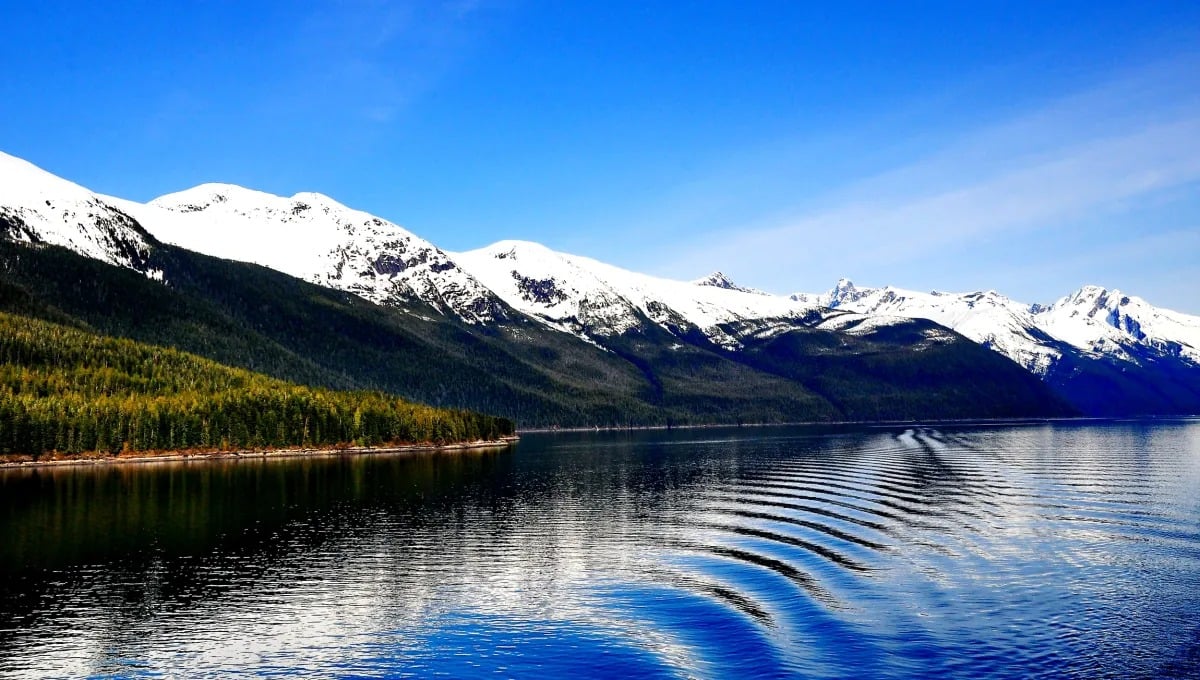
Winter in Alaska is a time of enchanting beauty as the landscapes are draped in thick blankets of snow and the state is transformed into a true winter wonderland. This beauty and the allure of the Northern Lights make winter in Alaska a favorite period for travelers to come visit.
However, this snowy charm comes hand in hand with the challenge of the Alaskan cold. Alaska can experience some of the most extreme cold temperatures on the continent, but the weather shouldn’t stop you. With the right gear and proper planning, you can still get out and enjoy Alaska’s beauty – without freezing off a little toe.
This guide will help you prepare for what to expect in the winter and equip you with the knowledge of the best gear to ensure your warmth and comfort. So, get ready to pack up some layers, grab your thermos, and head north for an adventure in Santa’s backyard!
Alaska's Winter Temperatures and Weather Patterns
The winter climate in Alaska varies dramatically depending on the region, making it essential to understand the range of conditions you might encounter:
Southcentral Alaska: This region, encompassing Anchorage and the surrounding areas, sees average winter temperatures oscillating between 5°F to 30°F (-15°C to -1°C). Here, wind chill can intensify the perceived cold, making it feel much colder. Snowfall is moderate but persistent, and freezing rain can occasionally lead to slippery, icy conditions that require caution.
Interior Alaska: This vast region, home to Fairbanks and Denali, is known for its harsh winters with temperatures regularly plunging below -20°F (-29°C). During extreme cold spells, the mercury can drop even further, hitting a bone-chilling -50°F (-45°C). Snowfall in this area is often light but consistent, resulting in a dry, powdery snow cover.
Southeast Alaska: This coastal region, which includes Juneau and Ketchikan, experiences milder winter temperatures, generally hovering between 20°F and 35°F (-6°C to 2°C). However, it also claims the title for the highest precipitation in Alaska, receiving a mix of persistent rain and wet, heavy snow that creates slick, slushy conditions. While temperatures are not dangerously cold, the wet can make it feel even colder. Be sure to pack fully sealed waterproof options (such as Gore Tex) for this part of your journey.
The North Slope: Renowned for its severe and prolonged winters, the Arctic region frequently records temperatures plummeting below -30°F (-34°C) or lower. While the area sees relatively low snowfall, the pervasive wind chill can significantly intensify the cold, making it feel much harsher than the actual temperature might suggest.
Layering: Balancing Warmth, Comfort, and Activity Level
The secret to staying warm and comfortable during Alaska's winter is mastering the art of layering. This strategy allows you to add or remove clothing based on your activity level and the prevailing weather conditions, thus effectively managing your body temperature and moisture.
The base layer should efficiently wick away sweat to keep you dry. In contrast, the mid-layer is there to insulate your body and retain heat, while the outer layer acts as your shield against the elements, protecting you from wind, rain, or snow. However, your activity level significantly influences the thickness and number of layers you need.
For instance, if you're hiking or skiing, you might need to shed some layers to prevent overheating and excessive sweating, which can leave you cold once your activity level drops. But during quieter activities or rest periods, you'll need all your layers to stay warm.
Selecting the Best Gear
Choosing the right gear can make the difference between an enjoyable winter adventure and a battle against the cold. Here are the top gear recommendations to help you stay warm:
Base Layers: Opt for high-quality, moisture-wicking fabrics like Smartwool or traditional long johns. These materials draw moisture away from your skin, keeping you dry and warm.
Mid-Layers: Lightweight fleece makes for excellent mid-layers, as does a packable down jacket with a hood. If you are planning to travel to extremely cold regions, double up on the mid-layer with both options. These items trap warm air close to your body, forming an essential layer of insulation.
Outer Layers: An insulated, waterproof jacket is your first line of defense against the weather. If you plan on indulging in active pursuits like hiking, consider jackets with venting capabilities to prevent overheating and excessive sweating. For super cold weather, also look for hoods with wool or synthetic fur liners to block the wind from hitting your face.
If you plan on venturing out during the night for aurora viewing or participating in a sedentary activity (such as dog sledding or snowmobiling), pack an extra outer layer, such as ski pants and ski jackets. Many outfitters offer affordable gear rentals in Anchorage and Fairbanks for these specific activities, in case you don’t currently own this gear or don’t have room in your suitcase.
Footwear: Footwear plays a crucial role in your comfort and mobility. Insulated, waterproof boots from reliable brands like Bogs or Baffin ensure your feet stay dry and warm, even in slushy conditions.
Socks: Complement your boots with thick wool socks and a sock liner for additional comfort and insulation. Remember to avoid cotton, as it retains moisture and can leave your feet feeling cold and damp.
Accessories: Accessories are more than just fashion statements; they are key components of your winter gear. Opt for mittens, which are generally warmer than gloves, and pair them with glove liners for extra warmth. A wool-blend neck gaiter and a wool hat that covers your neck and ears offer vital protection against the biting cold.
Heating Elements: Consider carrying disposable heat packs. These handy devices can provide a significant boost of warmth for your hands and feet in extreme cold conditions, helping you maintain a comfortable temperature. Consider also packing a warm water bottle. These are great during cold nights or in the car. By placing them between your thighs, you can dramatically increase your body temperature and warm up much faster.
Ice protection: You will most likely encounter icy conditions during your winter Alaskan excursion. Sidewalks, trails, and parking lots can become dangerously icy throughout all regions. To protect yourself from falls, consider picking up a traction device to go over your shoes. YakTrax is a popular brand throughout Alaska and offers a variety of affordable options for most conditions. YakTrax features a coil or spike design that slides over your shoes and helps grip the surface and provide stability while walking or running on icy terrain.
Embracing the Frosty Adventure
Embracing the icy magnificence of Alaska during winter is a unique adventure that rewards the well-prepared traveler. Blanketed in snow, the landscapes shine with a brilliant glow, while the northern lights dance in the sky – making braving the cold a worthy endeavor.
Remember, layering is your ultimate ally in the Alaskan winter. Adapting your layers according to your activities and the current weather conditions allows for an effective balance between warmth, comfort, and breathability.
So, arm yourself with the right knowledge, pack your best gear, and get ready to embark on an unforgettable journey through Alaska's frost-laden landscapes. May your winter adventure in Alaska be warm, thrilling, and brimming with incredible sights that create lasting memories. Happy travels and stay warm!

